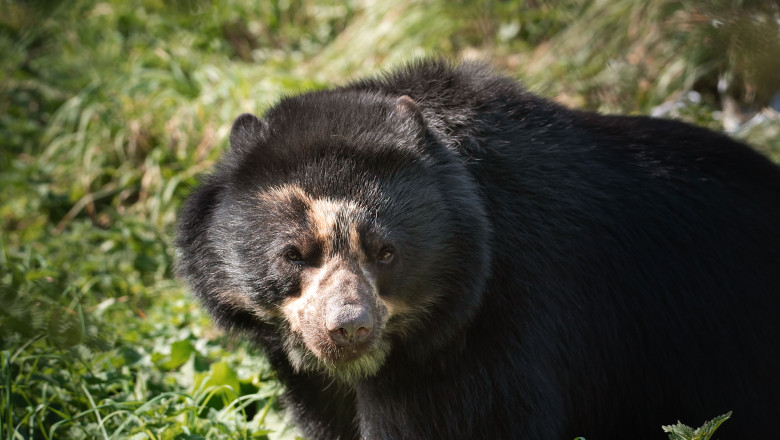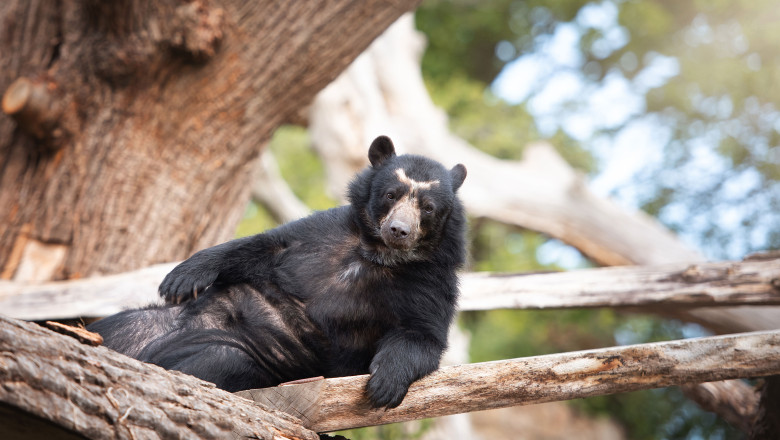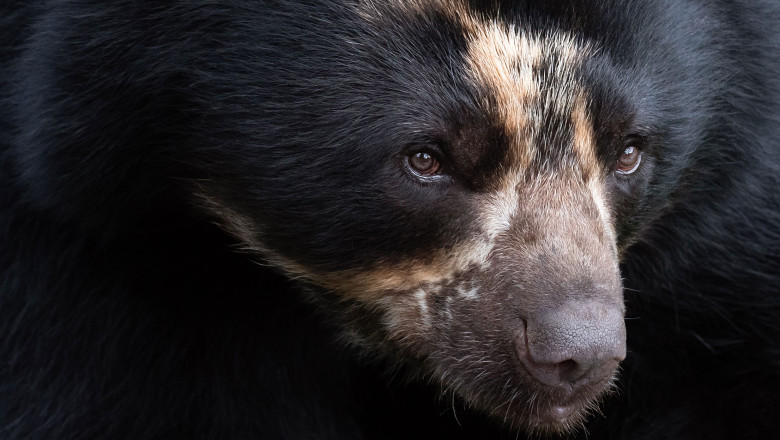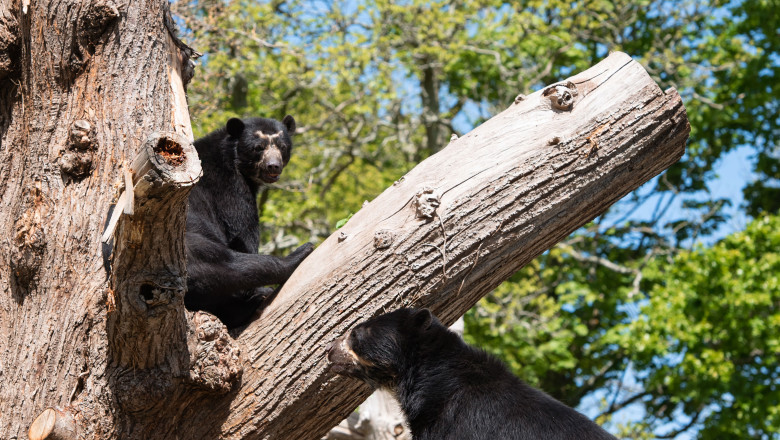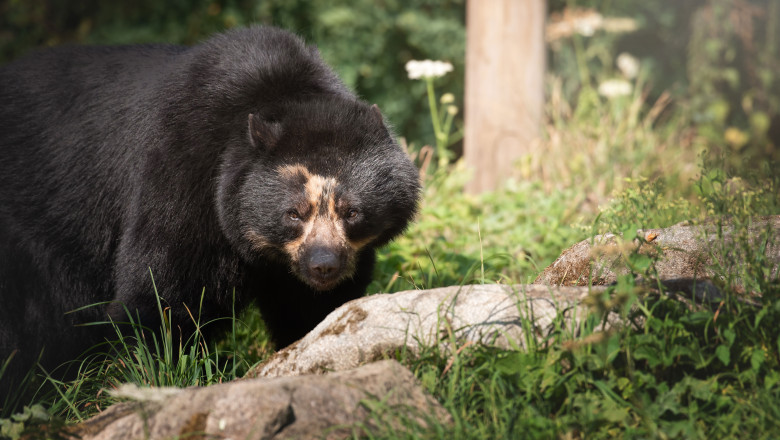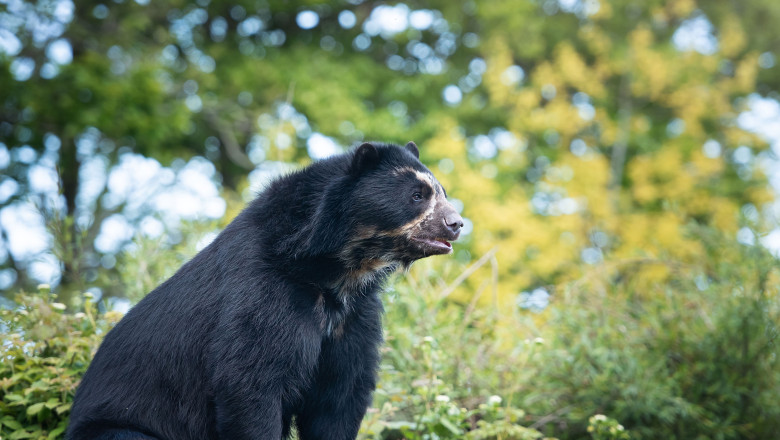About Andean Bears
Imagine a bear wearing a stylish pair of spectacles! That's how Andean bears earned their nickname, thanks to their unique facial markings – distinctive rings around their eyes. They’re also equipped with a short muzzle and powerful, flat teeth so they can easily chew through tough vegetation and tree bark whilst their thick, shaggy fur helps keep them warm in the chilly mountain air.
Forget ladders, Andean bears are perfectly adapted for climbing with their non-retractable claws which help them climb around their mountain habitat at a height of 13,000 ft to reach food! That's like climbing almost halfway up Mount Everest! Eating so much fruit means they disperse seeds in their droppings across vast distances, landing in fresh patches of soil throughout the forest. These then grow into the next generation of fruit trees which is crucial for the entire Andean ecosystem – making these bears a keystone species.
Discover more about our Andean bears below, or encounter them up close on the Foot Safari in Bear Country!
Fact file
Family: Ursidae
Status: Vulnerable
Gestation: About 60 days (but female bears experience delayed implantation)
Number of young: 1-2 cubs
Diet: Omnivore
Fun facts about the Andean Bear
-
They are omnivores, generally they feed mainly on fruit but also eat fresh meat and insects
-
Andean bears have only 13 pairs of ribs, one less than other bears
-
Andean bears are the only bears found in South America
-
Males can grow up to 50% larger than females
-
Paddington was an Andean bear
Andean Bear Facts - Your questions answered!
Don't underestimate the size of them. Andean bears are usually between four and six feet long and the males are practically double the size of the females, approximately 30% to 50% larger.
With a lifespan of about 20 years, these bears choose a solitary path, only reuniting during mating season. Gestation is about 60 days (but female bears experience delayed implantation) and the mother usually gives birth to one or two cubs who remain in the safety of their den for the first three months of their lives.
There are only thought to be around 13,000-18,000 left in the wild, (that’s around the same amount of people that fit into the Kop at Anfield) living in the Andes Mountains in northern and western South America. Their biggest threats come from humans and include the destruction of habitats for roads, cities and farming, hunting for meat and being killed as agricultural pests.
Stroll through our Foot Safari and down to Bear Country where you can find our Andean Bears!


